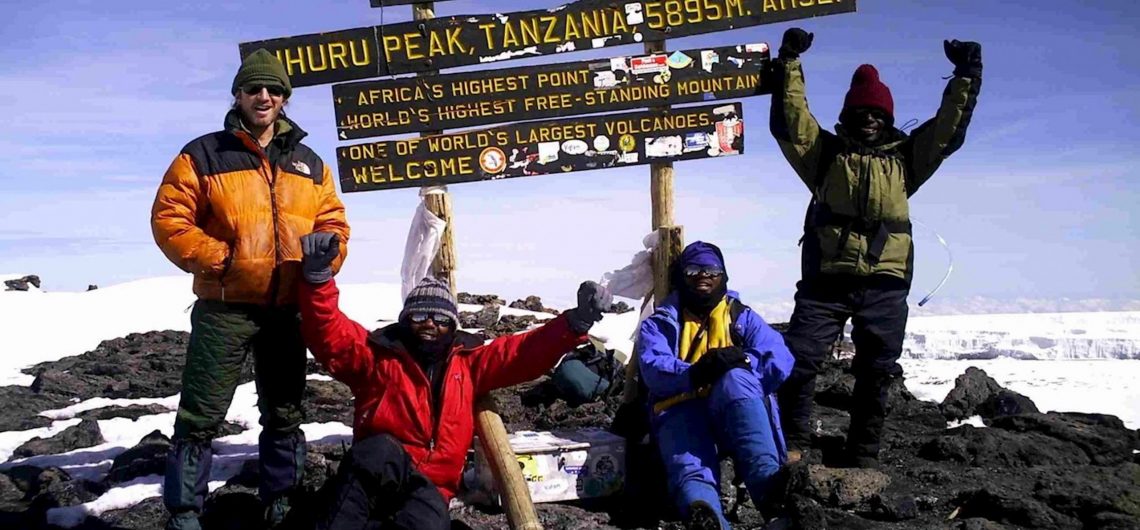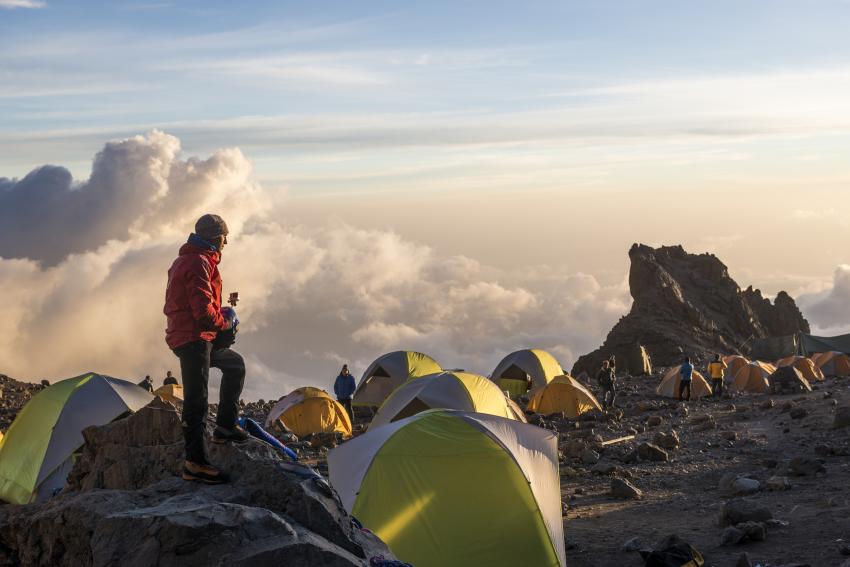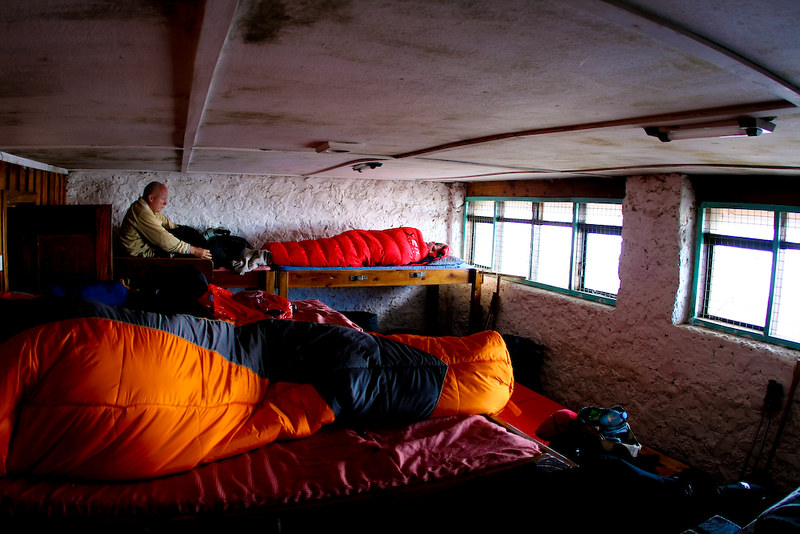Lemosho versus Marangu route comparison is between two very different routes yet unique in their own ways. It is like comparing an automatic transmission car and a manual, shift gear car.
Out of the 8 routes on Kilimanjaro, about 5 are popular amongst climbers and we have guided quite a good number of climbers climbing Mount Kilimanjaro, often known as the “Roof of Africa,” to its peak.
Lemosho and Marangu feature prominently among the preferred routes for climbers on the mountain in fact these two routes plus the Machame Route, are the most used routes for climbing Kilimanjaro
Here, we’ve chosen two routes—the Marangu and Lemosho Routes—and compared every aspect of climbing Mount Kilimanjaro to the very top, the Uhuru Peak before making a decision based on the pros and cons as tabulated by our past clients.
You may also like: Lemosho vs Machame Route which is the best route on Kilimanjaro?
Main differences between Lemosho and Marangu Routes
- Lemosho route takes longer (7-8 days) than the Marangu Route (5-6 days), which is one of the shortest routes on mount Kilimanjaro
- Lemosho Route is more scenic than the Marangu Route
- Lemosho route uses a different route to descend (Mweka Route) while the Marangu Route uses the same route for Ascent and Descent
- Lemosho Route uses camping in form of tents while Marangu Route uses A-shaped, dormitory-styled lodges called huts
- Lemosho Route is one of the newest created routes on the mountain while Marangu Route is the oldest route on Kilimanjaro.
Just to give you an overview of these two routes, it is worth noting that Lemosho Route is very scenic and provides beautiful views of the Mt. Kilimanjaro highlands, valleys, and forests, whilst the Marangu Route is renowned as being the oldest route with hut accommodations.
You may pick the best route that is most appropriate for you by comparing the Marangu and Lemosho Routes in detail below.
Lemosho Route
Lemosho trail descends through the Mweka route and approaches Mount Kilimanjaro from the west. It is recognized as a longer route and links with the popular Machame route close to the Shira Plateau. The traditional Shira Route from which the Lemosho was coined is more challenging and steeper than the Marangu and Rongai Routes.
Lemosho route provides considerable time for acclimatization as well as chances to “Climb high and Sleep low.” Consequently, this approach has a high success rate. The first several days require you to travel through a gorgeous, inaccessible rainforest filled with amazing fauna.
This trail of Lemosho is renowned for being incredibly scenic, undeveloped, and kind of calm and deserted. You will get the chance to take in the most breathtaking picturesque view of enormous Kilimanjaro creatures in the thick rainforest.
The breathtaking gorges on Mount Kilimanjaro’s western flank are just out of this world, stunning!
Along this walk, you may see impalas, buffaloes, and elephants. You will experience the breathtaking views at a great height while walking close to the Shira Plateau, Lava Tower, and valleys.
It is advised to take 8 days route variation of Lemosho because it will give you more acclimatization time. Tranquil Kilimanjaro offers this route in two variants, the 7 days Lemosho Route and the 8 days Lemosho route.
Read more about the Lemosho Route here
Why choose the newer Lemosho Route?
- Hikers are drawn to the peak by the scenic and pristine surroundings.
- Best rate of summit success since it provides ample time for acclimatization and quick recovery.
- This path is distinctive because of the little traffic.
- The ideal path for wildlife photography since you can see animals like impala, buffalo, leopards, and hyenas.
Pros
- Gives a better success percentage for the summit at the Uhuru peak of between 80 to 85%.
- For a quick recovery, an amazing “Climb high and sleep low” profile.
- Better profile of acclimation.
- Plenty of wildlife and beautiful natural scenery.
Cons
- More costly because of longer days spent on the mountain.
- Takes longer to climb as it needs at least 7 days to reach the peak.
- A longer drive before the trip begins.
 Marangu Route
Marangu Route
The sole way that leads directly to the summit and climbs steadily and gently is the Marangu Route, often known as the “Coca-cola” route. It reaches Mount Kilimanjaro from the southeast and is the only route that provides hut accommodations, which are dormitory-style accommodations. You will pass by Mandara Hut, Horombo Hut, and Kibo Huts while hiking.
When trekking over the Marangu Route, you must ascend and descend along the same path. It is a stunning path that travels over less difficult terrain and is a well-known “tourist route”.
An older path with stunning scenery and a wide variety of fauna is the Marangu Route. Blue monkeys, colobus monkeys, hyenas, bush infants, and many rat species are all readily seen close to the hut.
The success rate at the peak is poor since most hikers start out unprepared and mistake it for the simplest path. The busiest of all the roads, this one does not allow for the maxim “Climb high and sleep low.”
Choose the 6 Days Marangu Route between days 5 and 6 for the hut accommodations and the gentle route to the peak for greater acclimatization and to avoid altitude sickness for a successful summit.
Read more about the Marangu Route here
Why should you choose the Older Marangu Route?
Despite having a poor acclimatization profile, the Marangu Route is the most popular due of its comfortable hut lodgings.
The direct path has a moderate rise for a comfortable stroll and leads to the peak.
It is particularly helpful during the rainy season as it is the only route that offers hut accommodations.
For photography, the Marangu Route offers the most breathtaking landscape.
Pros
- The quickest and most direct path to Uhuru Peak’s top.
- Accommodation huts that are comfortable.
- Provides a beautiful perspective of the wildlife and plants of Kilimanjaro.
- More affordable option to climb Kilimanjaro
Cons
- Due to insufficient acclimatization, the success rate is lower, at 65%.
- High traffic of climbers
- The phrase “Climb high and sleep low” is not an option.
 So which is the better Route, Marangu or Lemosho?
So which is the better Route, Marangu or Lemosho?
When you compare the Marangu and Lemosho Routes, you can see that both are excellent for each of their respective purposes. While Lemosho route advantage lies in greater summit success, better acclimatization with “climb high and sleep low” chance and full of the most breathtaking view of scenic views, Marangu Route specializes in an indirect route to the top, with the more comfortable hut accommodations, full of beautiful vistas being the strong point. Choose the ideal option based on your preferences, degree of fitness, and summit success.
We trust that you now understand how to choose between the Marangu and Lemosho Routes to climb Mount Kilimanjaro.
With the consideration of health, safety, and hygiene, Tranquil Kilimanjaro works hard to make your treks comfortable and successful.
![]()


 Marangu Route
Marangu Route So which is the better Route, Marangu or Lemosho?
So which is the better Route, Marangu or Lemosho?
Comments